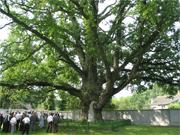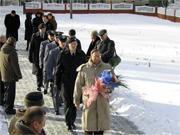Overview of Zhabinka’s tourist trails — history, nature, heritage.
Tourist Routes of the Zhabinka District
Compiled by Anatol BENZYARUK

Every corner of the earth is beautiful in its uniqueness. And human memory grows stronger when the bond of ages connects destinies, peoples and countries, revealing to descendants the secrets of their native history and welcoming good guests with bread and salt. This tourist guide introduces Zhabinka region – a land of distinctive character, rich in traditions and generous in talents. Located at the crossroads of the main roads running from west to east, the territory of the small but extremely interesting Zhabinka District has long aroused genuine interest. Millennia have passed since the first person set foot on the banks of the Mukhavets. Each era left at least a small trace, and it is the task of historians and local historians to examine the imperceptible steps of the past, so as then to tell people about the wonderful heritage of their native land.
Since ancient times remnants of fortified settlements with numerous barrows have been preserved in the Zhabinka area, where the mysteries of the ancestors' lives are still hidden. The "Zhabinka route" was traversed by many famous persons. Queen Bona and Emperor Alexander I, Karol Sierakowski and Alexander Suvorov, Maksim Tank and Alexander Griboyedov visited these places at various times. Dozens of world-famous names are intertwined with our land, which has always been open to hospitable guests. Yet Zhabinka also often sent its own sons into the wide world, giving them wings.

Many of its natives became known beyond the region. The brightest star our land has raised is the figure of the national hero of Belarus, Poland and the United States of America, General Tadeusz Kościuszko.
Among the outstanding natives of the region are the names of the political figure of the Polish–Lithuanian Commonwealth Vikentiy Trembitsky, Bishop of Brest Ignacy Zhaliazovsky, folklorist scholar Yulian Krachkovsky, Soviet military commander Markiyan Hermanovich, poet Albin Dzyakonsky, Doctors of Medical Sciences Yevgen Zavulichny and Daniil Kryvchenya, and Heroes of Socialist Labour Andrey Trafimuk and Fyodor Valasyuk.
Zhabinka region has always been open to friendship and cooperation. Therefore various forms of tourism are steadily developing in the district. This is facilitated by an exceptionally wide network of transport routes that cross our land, and by the relatively close proximity to Poland and Ukraine. It is also supported by the generosity of the land and the people who create its beauty.
We hope that with the help of this guide everyone will be able to find their own route — one that will allow them to discover a piece of the unique Zhabinka region.
Literature about the Zhabinka District
Benzaruk A.R. Our Land – Zhabinkawshchyna: (a guide to the history of Belarus). – Brest, 1996. – 109 pp.
Benzaruk A.R. Memory of Our Land: Historical and Cultural Sites of the Zhabinka District. – Brest: OJSC “Brest Regional Printing House”, 2002. – 36 pp.: photographs.
Benzaruk A.R. Kostiushko-Syakhnovitsky: History of an Ancient Family. – Brest: Publishing House “Academia”, 2006. – 132 pp.
Bobrovsky P. Materials for the Geography and Statistics of Russia, collected by officers of the General Staff. Grodno Governorate. – Part 1. – St. Petersburg, 1863. – 888 pp.
Zhabinka District: Reference and informational materials. – Zhabinka, 2002. – 32 pp.
Memory: Historical-documentary chronicle of the Zhabinka District / ed.-comp. R.Ya. Smirnova. – Minsk: Uradzhay, 1999. – 510 pp.
Pokrovsky F.V. Archaeological Map of the Grodno Governorate. – Vilna, 1895. – 165 pp.
Press-tour to the hinterland: informational project of the Ministry of Information of the Republic of Belarus and the Belarusian press / comp. E.M. Galinovskaya. – Minsk: International Center for Integrated Information of Public Press-Center of the House of the Press, 2006. – pp. 298-315.
Compendium of Monuments of History and Culture of Belarus. Brest Region. // Academy of Sciences of the BSSR, Institute of Art Studies, Ethnography and Folklore, BelSE. – Minsk, 1990.
Sprogis I. Geographical Index of Selected Documents from the Act Books of the Vilnius Central Archive. – Vilna, 1913. – 390 pp.
Kharkevich F.K. Searches on the Suvorov Battlefields // Warsaw Military Journal. – 1900. – No. 2-4.